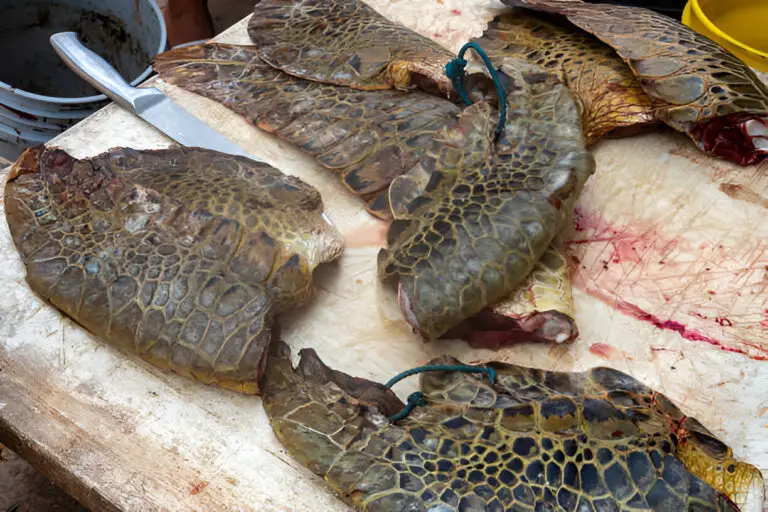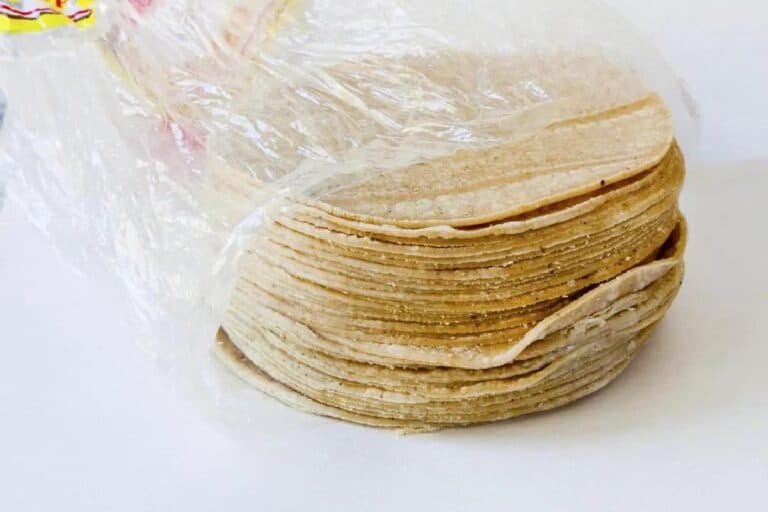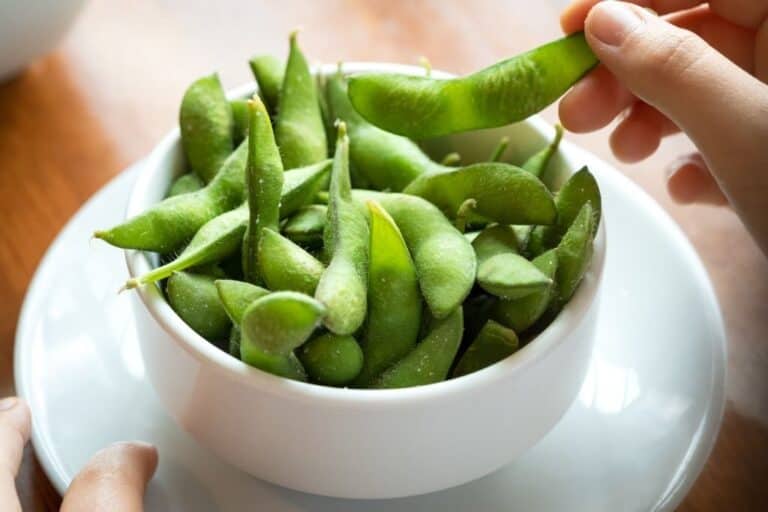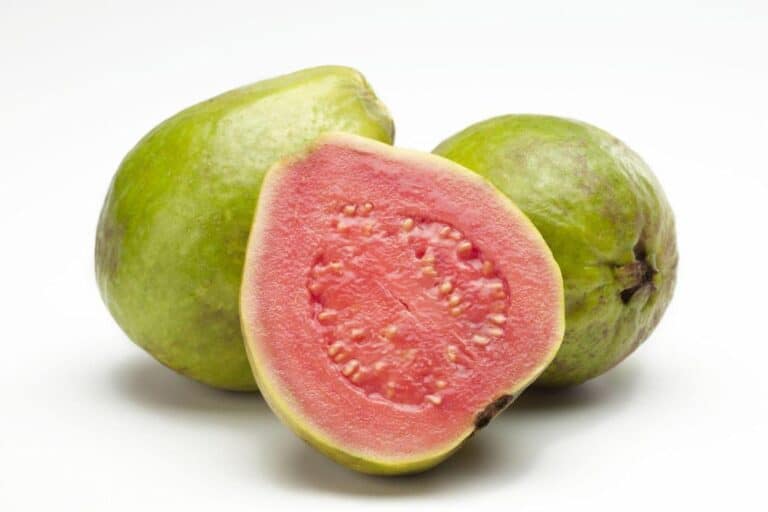Can You Eat Poblano Skin? Is Poblano Peel Edible and Safe to Eat?
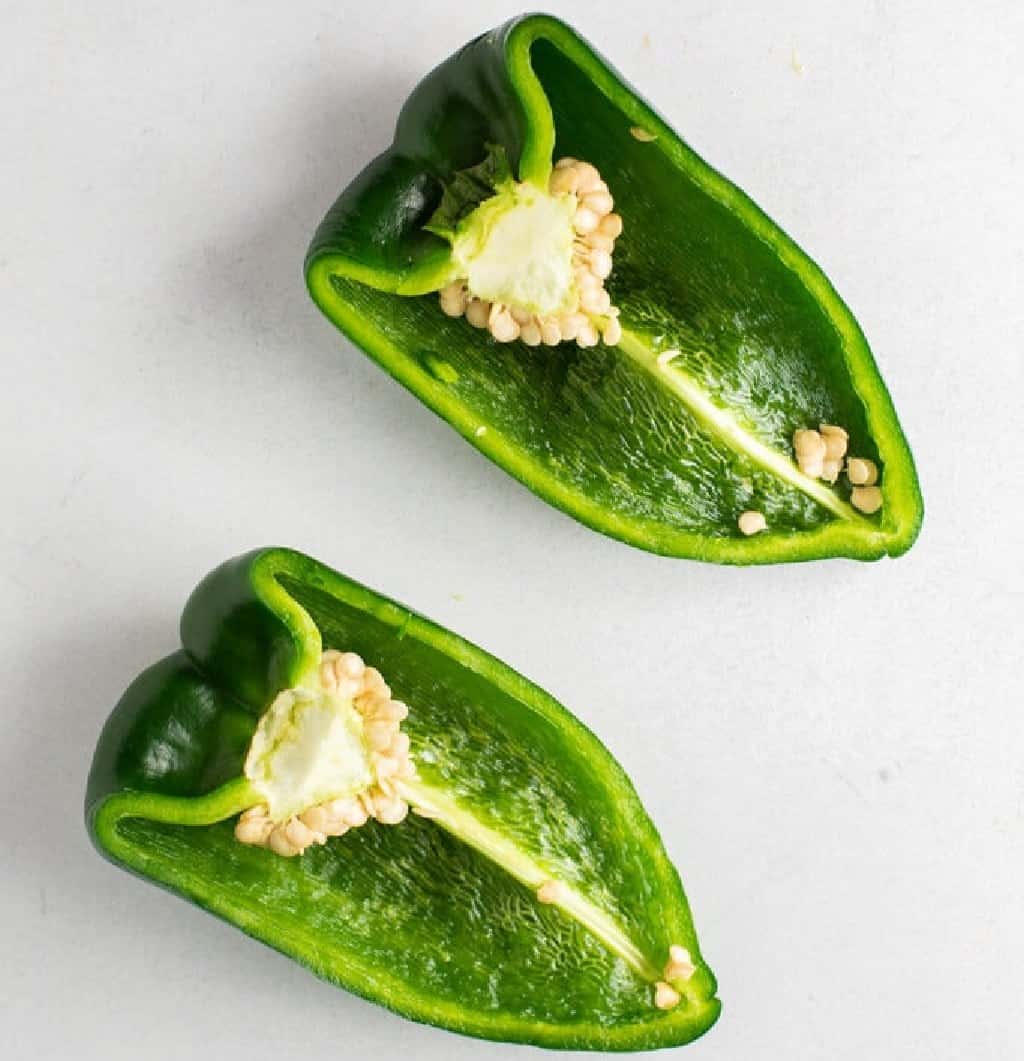
Poblano peppers, known for their mild heat and versatile flavor, have carved a special place in the hearts of food enthusiasts. From Mexican to Southwestern cuisines, these peppers offer a delightful addition to a plethora of dishes. But amid the chorus of culinary questions, one inquiry takes center stage: Can you eat poblano’s delicate skin?
Yes, you can eat the skin of poblano peppers. The skin is edible and does not contain anything harmful. However, the skin of poblano peppers is fairly tough and has an unappealing texture.
Beyond taste, we’ll dissect the nutritional riches they offer and navigate the safety waters, ensuring your gastronomic adventure is as savory as it is secure. So, tie on your apron, sharpen your knives, and let’s delve into the delectable world of poblano peppers, where every bite tells a tale of flavor, nutrition, and culinary artistry.
The Poblano Pepper: A Brief Introduction
Before we explore the intriguing aspect of consuming poblano pepper skin, let’s take a moment to familiarize ourselves with this cherished chili. Scientifically referred to as Capsicum annuum, these peppers bear the name ‘poblano’ in honor of their place of origin, the Mexican state of Puebla.
With a history that stretches back to this vibrant region, poblano peppers have become an essential part of culinary traditions.
A visual delight, poblano peppers showcase a glossy, deep green exterior that catches the eye. Their distinctive heart-shaped form adds to their allure, making them easily distinguishable among their pepper counterparts.
Beyond their captivating appearance, these peppers are revered for their remarkable flavor profile. A gentle spiciness is the first note that graces the palate, closely accompanied by a subtle undercurrent of sweetness. However, what truly sets the poblano pepper apart is the hint of smokiness that lingers in the background, adding depth and complexity to its taste.
It’s no wonder that these peppers have secured a special place in diverse cuisines around the world. From stuffing them with a medley of ingredients to incorporating them into sauces that grace hearty dishes, the poblano pepper’s versatility knows no bounds.
As we venture deeper into the realm of the poblano’s edibility, this background knowledge sets the stage for a richer appreciation of this beloved chili’s culinary role.
Nutritional Profile of Poblano Peppers
Peppers, often celebrated for their vibrant colors, also pack a nutritional punch. Poblano peppers are no exception. Rich in vitamins such as A and C, these peppers contribute to maintaining healthy skin and boosting the immune system. They also harbor minerals like potassium, vital for heart health, and antioxidants that combat oxidative stress.
A single poblano pepper, approximately 3.5 ounces (100 grams), contains:
- Calories: Around 30 calories
- Vitamin C: A substantial amount, contributing to immune system health
- Vitamin A: Aiding in vision and skin health
- Fiber: Supporting digestive health and satiety
- Vitamin B6: Essential for brain development and function
- Potassium: Assisting in maintaining proper fluid balance and muscle contractions
To Eat or Not to Eat: Exploring Poblano Skin Edibility
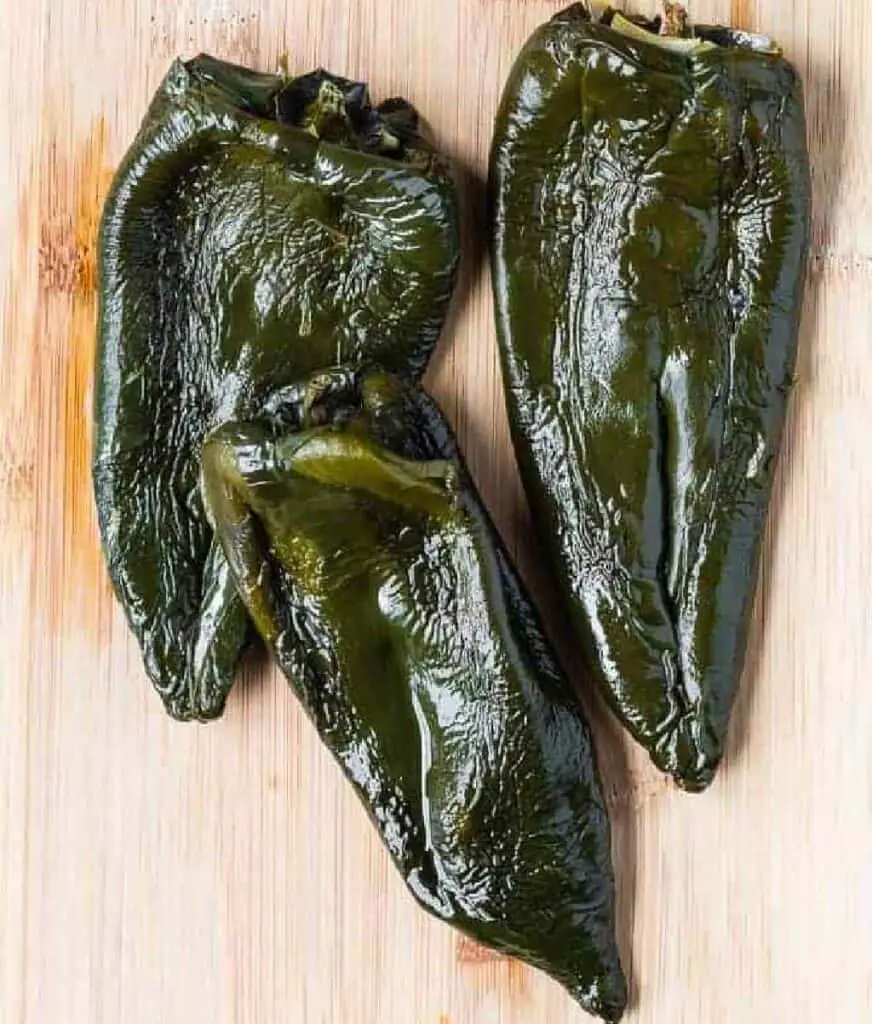
The question of whether poblano skin is edible often arises during meal preparation. The answer? Yes, you can absolutely eat poblano skin! Unlike some pepper varieties with tougher or bitter skins, the poblano’s skin is thin and quite palatable when cooked. In fact, the skin holds much of the pepper’s flavor and nutritional goodness, making it a shame to discard it.
When cooking with poblano peppers, the skin typically becomes softer and more tender as the pepper heats up. This transformation not only enhances the overall eating experience but also diminishes any concerns about the skin’s texture. Whether you’re roasting, sautéing, or stuffing poblanos, the skin becomes an integral part of the dish.
When considering the edibility of poblano peppers, it’s important to understand the different components. The skin, flesh, and seeds all play distinct roles. While the seeds are edible and contribute to the pepper’s mild heat, the flesh steals the spotlight with its tender texture and tangy flavor.
Do You Need to Peel Poblano Peppers Before Eating?
When it comes to enjoying the delightful poblano pepper, the question of whether to peel it before consumption often arises. Let’s delve into the options, benefits, and considerations surrounding this culinary choice.
1. To Peel or Not to Peel:
Peeling poblano peppers is not a strict necessity; however, it can enhance the texture and flavor of certain dishes. The decision largely depends on the recipe and personal preference.
2. Reasons to Peel:
Peeling the poblano pepper can offer several advantages:
- Texture: The skin can sometimes be tough and slightly bitter, which peeling eliminates, resulting in a smoother texture.
- Digestibility: Removing the skin can make the pepper easier to digest for some individuals.
- Flavor Concentration: Peeling intensifies the pepper’s flavor, as the skin can mellow out the taste.
3. Methods of Peeling:
If you choose to peel, here are two common methods:
- Roasting and Peeling: Roasting the pepper over an open flame or under a broiler blackens the skin, allowing it to be easily peeled away.
- Blanching and Peeling: Boiling the pepper briefly and then transferring it to ice water loosens the skin, making it simpler to peel.
What is the Taste and Texture of Poblano Pepper Skin?
Delving into the culinary realm of poblano peppers, understanding the taste and texture of their skin opens up a world of flavors and possibilities. Let’s explore this aspect in detail, breaking down the sensory experience into taste, texture, and potential applications.
| Aspect | Taste | Texture |
| Skin of Poblano Pepper | Mildly Bitter with a hint of earthiness | Slightly Tough with a subtle crispness |
Taste Profile
The skin of a poblano pepper boasts a distinctive flavor profile. It carries a gentle bitterness, which is often contrasted with its slightly earthy undertones. This bitterness, though mild, can add a layer of complexity to dishes when utilized thoughtfully. When considering whether to peel or keep the skin, acknowledging this nuanced bitterness is key.
Texture Experience
In terms of texture, the skin of a poblano pepper contributes a subtle toughness. While not overwhelmingly rigid, it offers a slight resistance when bitten into. This characteristic can lend a satisfying snap to dishes, contributing to the overall mouthfeel.
When incorporated into recipes, the interplay between this texture and other ingredients can create a harmonious blend of sensations. Poblano pepper skin is thin and tender when cooked, enhancing the overall eating experience by becoming softer and more palatable.
Is it Safe to Eat Poblano Skin?
Safety is paramount when it comes to consuming any food, and poblano peppers are no exception. Generally, yes. Poblano pepper skin is not known to be harmful when consumed.
However, it’s essential to be aware of potential allergenic reactions or sensitivities. If you have a known allergy to peppers or nightshade vegetables, it’s advisable to steer clear of poblano skin consumption.
Additionally, if you’re new to eating poblano peppers or have a sensitive digestive system, it’s wise to moderate your intake. Some individuals might experience mild stomach discomfort if consumed in excess. As with any dietary change, it’s always a good idea to listen to your body and make choices that align with your personal well-being.
It’s wise to consider a few factors. Firstly, ensure that the peppers are sourced from a reliable and organic source to minimize the risk of pesticides. Secondly, for those with pepper allergies, it’s advisable to exercise caution when consuming the skin.
Getting the Best of Poblano Flavor and Texture
To truly savor the delectable taste and texture of poblano peppers, here are some preparation and cooking tips to consider:
Roasting Poblanos
Roasting poblano peppers is a fantastic way to intensify their flavor and achieve a delightful smokiness. Follow these steps for a mouthwatering experience:
- Preheat the Oven: Set your oven to broil at a high temperature.
- Prepare the Peppers: Place whole poblano peppers on a baking sheet, ensuring they’re evenly spaced.
- Broil and Rotate: Let the peppers broil for a few minutes until the skin starts to blister and blacken. Rotate the peppers to ensure even roasting.
- Steam and Peel: Transfer the roasted peppers to a bowl and cover with plastic wrap. The steam will help loosen the skin. After a few minutes, peel off the skin, revealing the delicious roasted flesh.
Stuffing Poblanos
For a mouthwatering stuffed poblano dish, consider the following steps:
- Char and Peel: Char the poblano peppers over an open flame or under the broiler until the skin blackens. Place them in a sealed plastic bag for a few minutes, then peel off the skin.
- Create a Pocket: Make a vertical incision along the side of the pepper and carefully remove the seeds while keeping the stem intact.
- Prepare the Filling: Mix your desired filling, which could include a combination of cheese, meat, beans, rice, and spices.
- Stuff and Bake: Gently fill the poblanos with your chosen mixture and place them in the oven until the filling is heated through and the cheese is melted to perfection.
Conclusion
In the realm of culinary exploration, the poblano pepper reigns supreme as a canvas of flavor and texture. The good news is that you can indeed eat poblano pepper skin, and doing so opens the door to a world of creative and delectable dishes.
Cooking with poblano skin allows you to incorporate its thin and tender nature, adding depth and character to your meals. From roasted poblano strips adorning tacos to stuffed poblanos brimming with savory goodness, the edible poblano skin enhances both the visual appeal and the taste of your culinary creations.
As you embark on your gastronomic journey, it’s important to note that poblano pepper skin offers not only a delightful taste but also notable health benefits. Rich in vitamins and antioxidants, the skin contributes to the overall nutritional value of your dishes. It’s worth exploring the various cooking methods that preserve the poblano skin’s integrity, such as roasting poblano peppers with the skin intact.
Embracing the allure of poblano peppers, including their skin, can become a fulfilling culinary adventure. The versatility of poblano skin in dishes knows no bounds. Its safe and valuable presence in your cooking repertoire adds a layer of authenticity and flavor to your meals.
So go ahead and relish every bite, knowing that you’re indulging in not just deliciousness, but also the myriad benefits that edible poblano pepper skin brings to the table. Your taste buds and your well-being will undoubtedly thank you.
FAQs on Edible Poblano Pepper Skin
Is poblano pepper skin difficult to digest?
While the skin might be slightly tougher than the flesh, it’s generally not a digestive concern for most people.
Can you eat raw poblano peppers with the skin?
Yes, you can eat raw poblano peppers with the skin. However, cooking can enhance its flavor and make the skin more palatable.
Does poblano pepper skin add significant flavor to dishes?
Poblano pepper skin does contribute flavor, but it’s not as potent as the flesh. Roasting or grilling the pepper can intensify the skin’s flavor.
Are there any allergy concerns related to poblano pepper skin?
Allergies to poblano pepper skin are rare, but individuals with existing sensitivities to peppers should exercise caution.
How do you prepare poblano peppers for cooking?
To prepare poblano peppers, you can roast or char them to easily remove the skin. After roasting, the skin blisters and blackens, making it simple to peel away and reveal the flavorful flesh.
Can you eat the skin of other types of peppers?
Yes, you can eat the skin of many pepper varieties, especially after cooking. It’s generally safe and adds additional flavor and nutrients to your dishes.
What are some popular dishes that use poblano peppers with the skin on?
Poblano peppers are stars in dishes like chiles rellenos, where they’re stuffed and served with their skin intact. They also feature in tacos, salsas, and fajitas, adding a mild kick and distinctive taste to the recipes.

